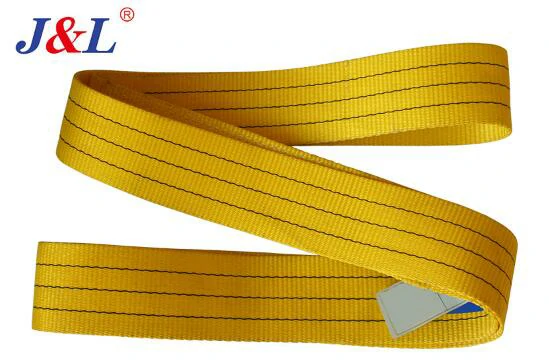The Ultimate Guide to Different Types of Webbing Slings
January 29, 2025
Webbing slings are essential lifting tools used in various industries for safely and efficiently hoisting heavy loads. These sturdy and pliable slings are made to disperse weight uniformly and shield the load from harm. You’ve come to the correct place if you want to know more about the many kinds of webbing slings that are on the market. We will examine the several kinds of webbing slings, as well as their characteristics, uses, and advantages, in this extensive guide.
1. Nylon Webbing Slings
The remarkable strength and flexibility of nylon webbing slings are well known. These slings, which are made of synthetic nylon fibers, are ideal for usage in tough situations because of their strong resistance to abrasion, chemicals, and UV rays. Nylon slings are perfect for large lifting jobs since they are lightweight and have a high load-bearing capability. They are frequently employed in sectors like manufacturing, logistics, and construction.
2. Polyester Webbing Slings
Polyester webbing slings are known for their excellent resistance to stretching and elongation. The sturdy polyester fibers used to make these slings give them exceptional resistance to UV rays, moisture, and mildew. Because polyester slings have a minimal elasticity, they can be used to lift delicate or fragile loads. Industries including warehousing, automotive, and agriculture frequently employ them.
3. Polypropylene Webbing Slings
Polypropylene webbing slings are perfect for light to medium-duty lifting applications since they are robust and lightweight. Because they are composed of polypropylene fibers, these slings have good resistance to solvents, acids, and alkalis. Businesses including food processing, retail, and small-scale manufacturing frequently employ polypropylene slings because they are affordable.
4. Wire Rope Slings
Wire rope slings are constructed from high-strength steel wires twisted into strands and woven together. These slings are extremely durable and have excellent resistance to abrasion and heat. Wire rope slings can handle heavy loads and are commonly used in industries such as oil and gas, construction, and marine. They are suitable for lifting operations that require extra strength and stability.
5. Chain Slings
Chain slings are made of interconnected metal chains and offer exceptional durability and strength. In addition to being resistant to chemicals and corrosion, these slings can tolerate high temperatures. Steel manufacturing, foundries, and heavy machinery are among the industries that frequently use chain slings. Because of their exceptional load stability, they are perfect for lifting very big loads.
6. Round Slings
Round slings, sometimes referred to as endless slings, are multipurpose lifting instruments composed of durable polyester fibers covered in protective sleeves. These slings are lightweight, pliable, and manageable. By equally distributing the load, round slings lessen the strain on the lifting points. They are frequently employed in sectors like material handling, rigging, and entertainment.
7. Specialty Slings
For certain lifting needs, customized slings are available in addition to the common webbing slings already described. These consist of slings that can withstand fire, high temperatures, acid, and other conditions. Specialty slings are made to satisfy the particular requirements of particular sectors and uses.
Conclusion
In conclusion, understanding the different types of webbing slings is crucial for selecting the right lifting equipment for your specific needs.
There is a webbing sling that meets your needs, whether you need strength, flexibility, resistance to external conditions, or specific lifting capabilities. A variety of materials, including nylon, polyester, polypropylene, wire rope, chain, round, and customized slings, are available to meet the needs of different lifting activities and industries.
Always keep in mind that safety comes first while using webbing slings. Follow the manufacturer’s instructions, do routine checks, and make sure your lifting personnel are properly trained. You may increase the effectiveness, dependability, and safety of your lifting operations by doing this. We are a supplier of webbing slings. Please get in touch with us right away if our products pique your interest.

